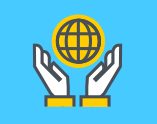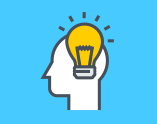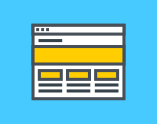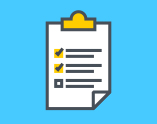The 7 Coolest Things Digitally Literate Teachers Are Doing in Their Classrooms

Teachers have always been naturally creative, and increased access to digital technology has allowed them to take their ideas to new levels. Here, we’ll take a look at seven inspiring examples of teachers and schools that are transforming the classroom with digital technology.
1. Weda Bory: iPhoneography
As a Grade 7 and 8 English language arts teacher at the Hong Kong International School, Weda Bory has no hesitation when it comes to mixing old and new mediums. She blends what she calls “iPhoneography” (photography taken on an iPhone) with teaching her students to write and tell stories.
To do this, Bory begins by giving her students a lesson on taking photographs, including a look into what makes for great lighting and composition. In so doing, she draws from tutorials on the web and on YouTube.
As she goes, she teaches her students about Harry Noden’s concept of Image Grammar, in which he argues that every story uses grammatical “brushstrokes” that paint real images. This naturally bridges written and visual storytelling, allowing Bory to prompt her students into writing descriptive captions for photos she presents and, later on, for the photos that they take.
Bory then transitions her students into lessons about photojournalism, and has students document the world around them while also creating photo journals of their everyday lives. She even manages to teach vocabulary by assigning her learners a word like “mistake” and having them take photos that represent that word. One can reasonably see teachers extending these activities to Instagram, where students can further editorialize and change the mood of photos with filters. Pinterest is also a natural fit, as students can create storyboards with their photos, or gain inspiration from other artists.
You can see more of Bory’s lesson plan tips here, as well as her iPhonegraphy tips for the classroom.
2. Mitch Fairchild: iPads, GarageBand and iMovie
What will you create today? from International Baccalaureate on Vimeo External link
As a design and technology teacher for the Wayside School District in Texas and the CEO of I.C.E.T., Mitch Fairchild has seen his teachers try their hands at all kinds of creative digital projects. He’s found iPads in particular to be a source of creativity in which students use the app GarageBand and iMovie to record and edit music videos. For this kind of project, students take a popular song like “All About That Bass” and adapt it to fit a certain subject or set of skills, like, “All About That ‘A,’ ” which taught test-taking skills.
The video above is a great example of what can be done with a few simple tools. For this production, students had to answer the question, “What impact does creativity have in the classroom?” The class first created a script in Microsoft Word. Then they used their iPads and their smartphones to record the film. Finally, they edited the film using the audio and video features in iMovie and GarageBand. In the end, the class entered — and won — an international symposium on Creativity in the Classroom in The Hague.
3. Travis Phelps: Digital Scaffolding
Eighth-grade English language arts teacher Travis Phelps had many different digital literacy projects to tell us about. From Class Craft to Membean, OpenEd, NoRedInk, DoInk, Kahoot, and Aurasma, Phelps’ classroom is proof that digital technology isn’t just for STEM or STEAM classrooms.
Perhaps most impressive is Phelps’ tying together of old and new technologies. When working through a reading unit, Phelps and his students will discuss a certain theme that’s cropping up throughout the novel. To further explore and reinforce that theme, Phelps has students watch curated YouTube videos. They watch it once as a form of close reading, watch it again and discuss what they’ve seen, and then go off in groups to complete a graphic organizer.
When Phelps is particularly pleased with a group’s work, he presents that work to the rest of the class to share what great work looks like. Then he sends that example to the class through Google Classroom, and students work to improve their own projects. When they’re finished, they turn their assignments in through the Google Classroom platform.
From here, they either begin reading the book or pick up where they left off. In this way, the digital tools are a form of scaffolding. They help imprint important lessons either before or during a reading unit so that students can better apply them as they continue through the material. This helps drive home essential points for students who need more help, while allowing more advanced students multiple creative ways to explore.
4. Brett Erenberg: Aurasma
As a tech integrationist and social studies teacher, Brett Erenberg is no stranger to using digital tools in the classroom. For one unit on prehistoric humans, he has students write scripts that help explain various issues related to the subject, such as the history Neolithic tools and how they were used. The kids then act out these scripts and film them, ensuring the sound quality is great and that they know how to present into a camera. The students also make posters for the project.
From here, students download the augmented reality app Aurasma and program the app to recognize the images on their posters. They link those images to the video(s) they’ve filmed. When touring the classroom, all a student, teacher or visitor needs to do is launch Aurasma and point their iPad camera at an image, and then one of the student videos pops up to educate the viewer on what that image represents and means. The entire classroom becomes an Aurasma museum with dozens of hidden secrets just a scan away.
5. Gary Ferraro: Educreations and Edmodo
As a seventh- and eighth-grade math and science teacher at St. John’s Vianney School in San Jose, California, Gary Ferraro covers a lot of material in a short period of time. Like any good teacher, Ferraro knows how crucial it is to determine how much information his students are absorbing in the classroom. But tests aren’t good enough for Ferraro; instead, he uses digital tools to turn his students into teachers.
“I require students to re-create a lesson as if they’re teaching it to someone who has never learned this material before,” Ferraro said.
Ferraro gives them examples before they begin and clear criteria as they create their lessons. They must have the proper content, use the correct vocabulary, incorporate at least three examples, and progressively increase the difficulty of each concept they explain. If they are touching on a topic the class has previously covered, they must reincorporate that topic as well.
Students use an app called educreations, which is available both for iPads and desktops, to do all of this. By the end of the year, if Ferraro has covered, say, nine different lessons, the students will have their own self-created library compiling nine video links for their lessons. Each link is saved and shared with other students through Edmodo. This way, students in the same year can benefit from each other’s knowledge, and students in the year below can feel inspired and encouraged as they watch the year above them in action. And of course, having students teach in this way requires a great depth of understanding.
Check out Ferraro’s students teaching how to solve equations with variables on both sides, all about slope intercept form, and how to solve linear inequalities.
6. Greg Beutler: Techscool.org
As a former engineer, Greg Beutler was naturally motivated to start a STEM-focused after-school program at his daughter’s school. Fully supported by the school’s progressive principal, Techscool has grown tremendously over the two and a half years of its existence.
Students have created many projects in that time, such as line tracing algorithms and stories told through digital animation. Perhaps one of the most creative inventions is a mine drawing game. For the game, students control a character that starts in one corner of the screen. Using the coding language Scratch, students place oval-shaped mines around the screen, the object of the game being to get their character to the center of the screen. Students can vary the difficulty level by placing the mines in different areas of the screen and creating different types mines. One student designed the game so that some ovals were actual mines, while others were fakes, making it difficult for players to discern the best route forward.
Through Techscool, students learn logic and basic programming skills in an interactive and hands-on way.
Read the rest of the series about digital literacy for teachers.
Graduate Degree Programs From USC Rossier School of Education
USC Rossier offers a range of online graduate degrees for aspiring teachers and experiences educators. Request information to speak with an admissions counselor.






